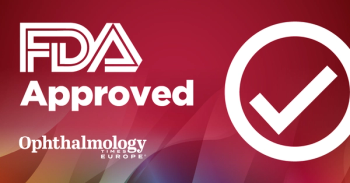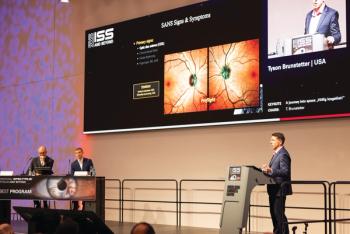
Out with the old and in with the new
A comparison of an older nanoliter osometer and a newer osometer shows that both devices are effective in measuring tear osmolarity and produce comparable measurements.
Although both devices are comparable in their ability to detect hyperosmolarity, the techniques they use are very different, and, according to one expert, it is up to ophthalmologists now to choose between these two devices.
"For several decades, many ophthalmologists have viewed the [traditional] osmometer as a mainstay in the diagnosis of dry eye syndrome. Most experts would agree, however, that the device is extremely difficult to use and very time consuming," said Alan Tomlinson, PhD, DSc, FCOptom, at the annual meeting of the Association for Research in Vision and Ophthalmology.
Dr Tomlinson, professor, Department of Vision Sciences, Glasgow Caledonian University, Scotland, recently conducted a comparative head-to-head study of the two devices that included 36 subjects, 15 with dry eye and 21 controls. Inclusion criteria for the dry eye group were noninvasive tear break-up time <10 sec, Schirmer I test <5 mm, and presence of symptoms. Tear samples were collected from the inferior-temporal conjunctival sac for testing of both devices.
Instruments correlate
The study found that the two instruments correlated well with each other. The osmolarity values for controls were 308 ± 6.2 mOsm/l (newer device) and 310 ± 7.2 mOsm/l (older device) and for patients with dry eye 321 ± 16.5 mOsm/l (newer) and 323 ± 14.7 mOsm/l (older).
A Bland-Altman analysis showed a very high level of agreement between both the techniques. The actual values differed by less than 1%, with the newer instrument producing lower values. There was a slight difference on the measurement, but according to Dr. Tomlinson, the difference in itself is not important in diagnostic terms.
Also, a cut-off value of >316 mOsm/l, derived from the distribution of osmolarity values, was used to diagnose dry eye, demonstrating an effectiveness of the newer instrument of 73% (sensitivity), 90% (specificity), and 85% (positive predictive value), and for the older instrument 73%, 71%, and 65%, respectively.
For years, ophthalmologists have considered hyperosmolarity as an indicator of all dry eye diseases, irrespective of their specific etiologies, he said. Until recently, measuring tear osmolarity involved freezing-point depression techniques, such as with the older nanolitre osmometer, where the freezing point of a solution depends on its osmolarity.
"The problem with this technique is that if there are more or less solutes in a solution, there will be a change in the freezing point of the solution. So, after measuring the freezing point, the osmolarity of the solution can be inferred," Dr Tomlinson said.
The newer osmometer uses a new technique based on a colligative property of tears, which is related to the osmolarity of the tears. Here, the electrical impedance of the solution changes as the osmolarity changes, allowing the device basically to measure the electrical transmission of the charge introduced into the solution. According to Dr Tomlinson, this is a novel nanoliter technique that offers a relatively expertise-free method for measurement of human tear osmolarity.
"Using the [newer] osmometer, one does not have to be a professional nor need any expert training with the device in order to take simple measurements, which is something that many ophthalmologists would welcome in their busy practice day," Dr Tomlinson said. "Any technician or assistant could take the measurements in patients with dry eye disease, which is surely not the case with the [older] osmometer."
FDA requirements
For FDA device approval in the United States, there is a particular level of expertise for laboratory techniques that either require or do not require training. The newer osmometer was designed for and meant to be used by a less-experienced individual and does not require any laboratory training to use it. The device is equipped with bells and sensors that tell the user when the reading is complete, each reading taking only about 30 seconds. Although the older osmometer has been the accepted standard for some time now, it is a technique that requires a highly trained technician and that takes about 20 minutes. This fact results in the ophthalmologist spending much more time with patients.
"Basically, the only people who were taking osmolarity readings using the [older] system on large numbers of patients with dry eye have been [associated with] laboratory-based research institutes," he said. "This has all changed now with the advent of the [newer] osmometer."
According to Dr. Tomlinson, the newer osmometer could become the gold standard in measuring tear osmolarity in patients with dry eye because it is an office-based device and has the advantages of ease and speed of measurement.
Newsletter
Get the essential updates shaping the future of pharma manufacturing and compliance—subscribe today to Pharmaceutical Technology and never miss a breakthrough.












































